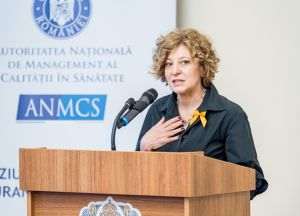Norway's Sovereign Investment Fund, formally known as the Global Government Pension Fund, is the world's largest sovereign wealth fund, managing $1.7 trillion in assets at the end of August 2024, according to data on the Bank's website Norwegian nationals. The fund owns approximately 1.5% of all listed companies globally, with a diversified portfolio of nearly 9,000 companies in 70 countries located around the world. The fund's most valuable holdings include giants such as Microsoft, Apple, Nvidia and pharmaceutical company Novo Nordisk. Per capita, the value of the fund translates into an impressive sum of more than $307,000 per Norwegian citizen.
• Fund Structure and Performance
At the end of the first semester of 2024, the fund was structured as follows:
- 72.0% of assets invested in shares
- 26.1% in fixed income
- 1.7% in unlisted real estate
- 0.1% in renewable energy infrastructure
In 2023, the fund generated a profit of 213 billion dollars, according to the report of the National Bank of Norway, which manages the fund. This is a remarkable achievement given the fluctuating global economic environment of recent years, with the Covid-19 pandemic, supply chain failures, the war in Ukraine and the energy crisis.
The fund complies with the 24 Santiago principles, which are a set of rules and recommendations for ensuring transparency, responsible governance and prudent risk management in sovereign wealth funds. These principles underline the importance of accountability and transparency in the management of sovereign wealth funds, contributing to stability and confidence of investors and citizens.
• History and evolution of the Fund
Norway's sovereign wealth fund traces its origins to the discovery of the first oil field in 1969 and the start of production in 1971. However, it took two decades of analysis and debate before the fund was established in 1990, almost 20 years after it began oil exploitation. The decision to create the fund was inspired by the 1983 Tempo Committee report, which recommended that oil revenues be saved in a sovereign wealth fund and that the government spend only the real return on accumulated assets.
In 1996, the fund began to accumulate the first net assets, and in 2001 the 4% rule was implemented, which stipulated that this proportion of the fund's value at the end of the previous year be used to finance the government's non-oil deficit. In 2006, the fund changed its name to the Global Government Pension Fund, reflecting the broader reforms of the Norwegian pension system.
The Norwegian fund and economic model are the result of extensive economic reforms that took place following a series of economic and financial crises. In the late 1970s and early 1980s, Norway used oil revenues to rapidly expand the welfare system, but this policy led to inflation, credit growth and stagnant productivity. In 1990, Norway went through a severe banking crisis driven by rising interest rates, which resulted in the full nationalization of three of the country's largest banks.
The banking crisis was a catalyst for a series of structural reforms, including the elimination of subsidies, the privatization of some state-owned enterprises, and the deregulation of the housing and electricity markets. Tax reforms increased incentives for work, closed tax loopholes, and established a tighter budget process. These measures were essential to ensure long-term economic stability and the success of the sovereign wealth fund.
• Investment strategy and governance of the Fund
The Oil Fund, later renamed the Global Government Pension Fund, invests exclusively in international assets to protect the domestic economy from market volatility and the risk of the economy overheating. About 60% of assets are allocated to equities, 35-40% to fixed income instruments and the rest to real estate. The fund follows a prudent risk and return strategy with a very long investment horizon.
A key feature of the fund is its transparency. The government reports quarterly on the fund's performance, risks and costs. In addition, all investments are public, contributing to a high level of trust on the part of citizens. The fund is subordinated to the Central Bank of Norway, so that its activity is integrated with the economic and financial measures of the Scandinavian country.
Norway's Sovereign Wealth Fund is a unique example of natural resource revenue management. By separating fiscal policy from oil revenue streams and establishing clear rules for spending, Norway has managed to transform a volatile and finite resource into a mechanism for macroeconomic stabilization and long-term prosperity. The fund not only secures resources for future generations, but also helps protect the domestic economy from the adverse effects of business cycles and external risks.
















































